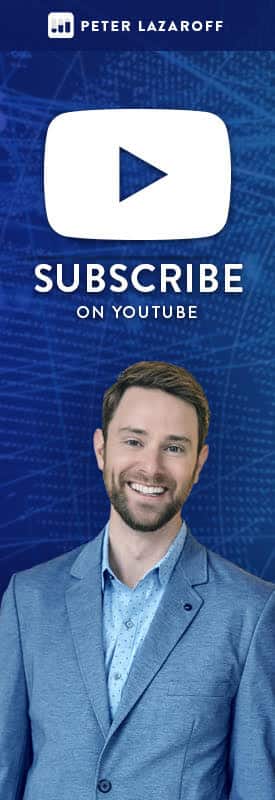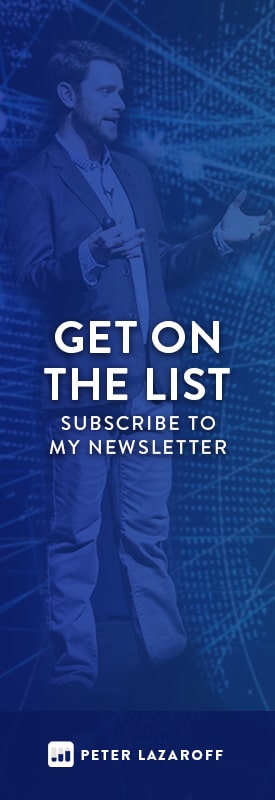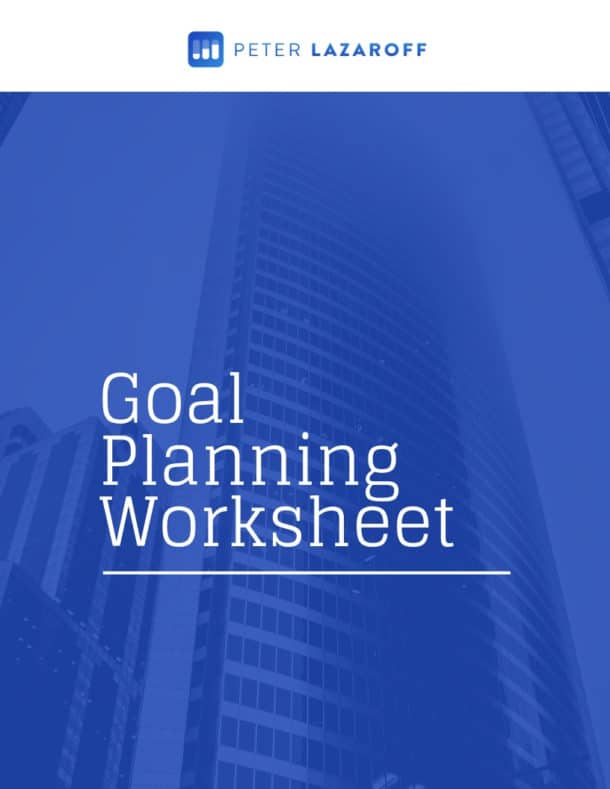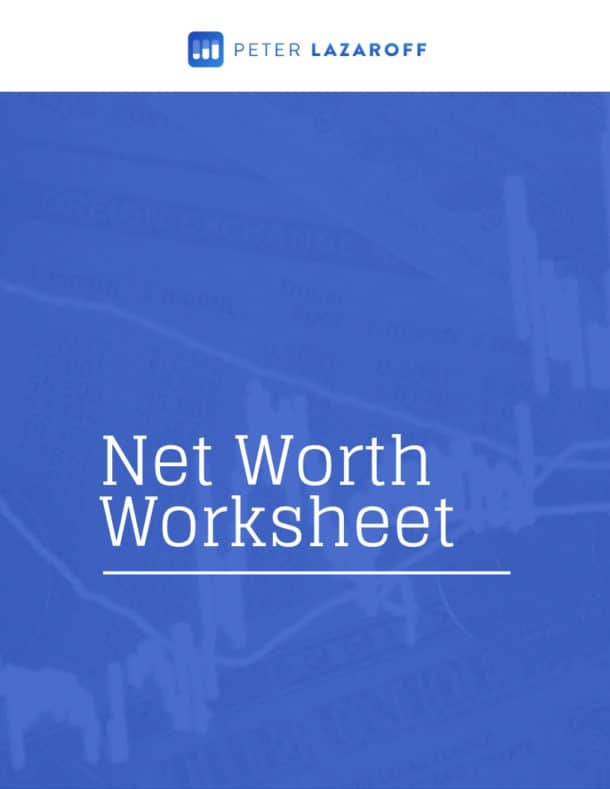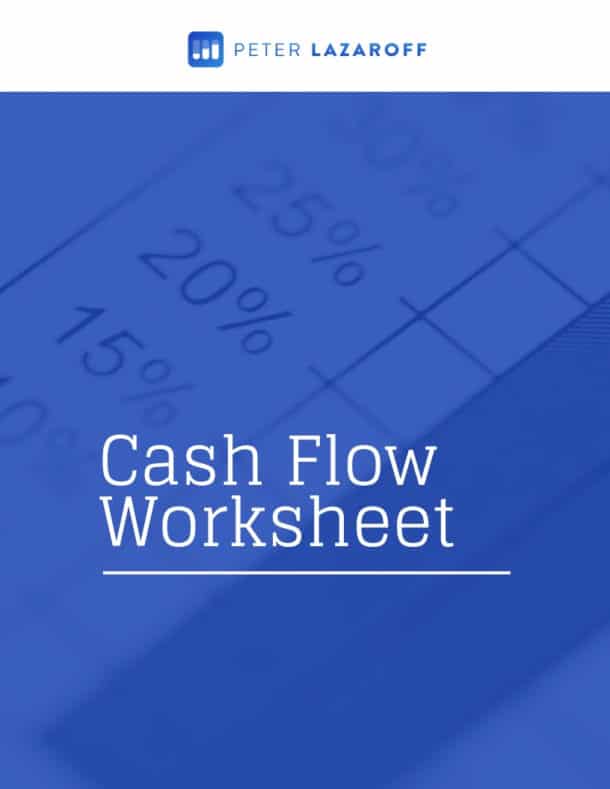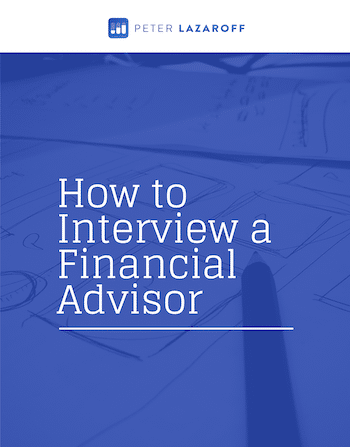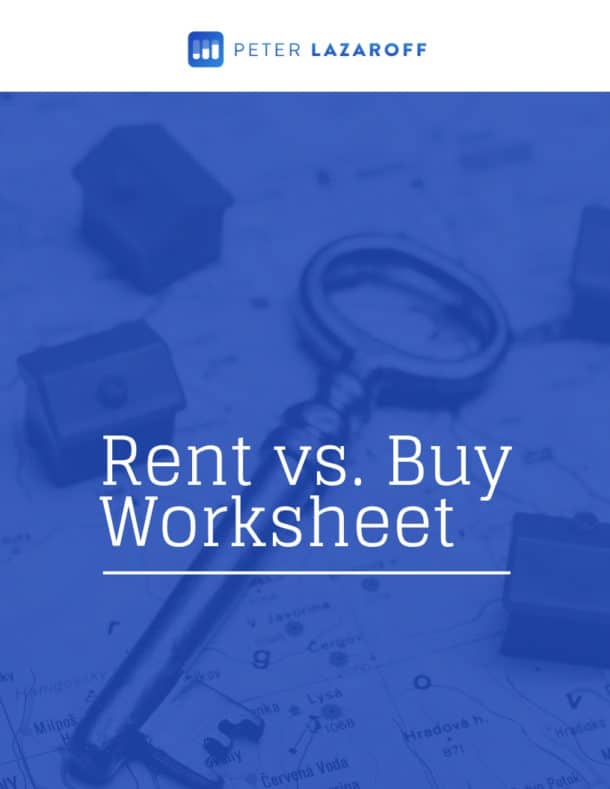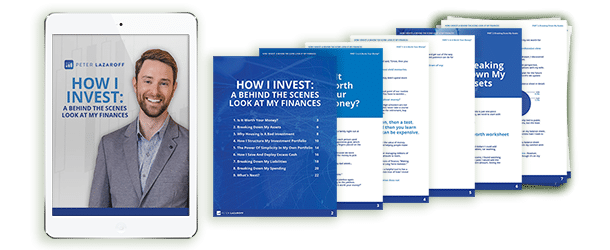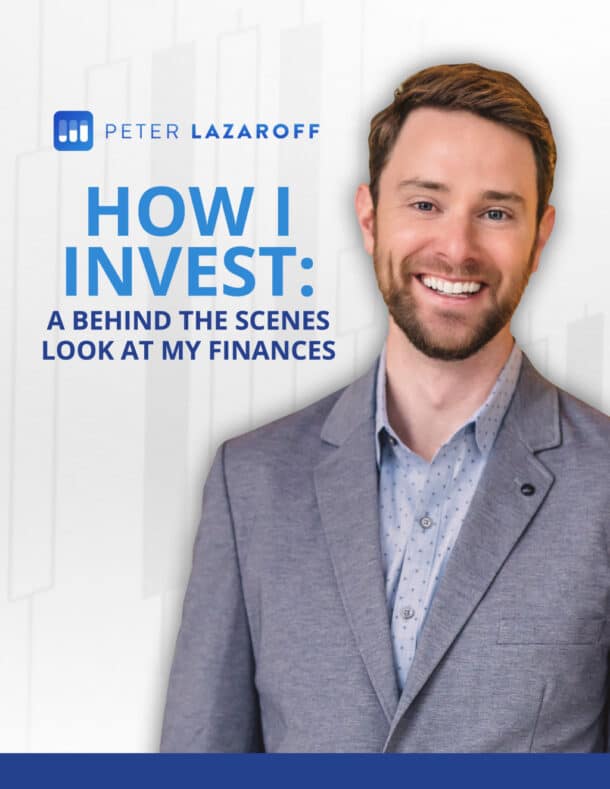Watch Now
Listen Now
In this episode, I’m joined by Barry Ritholtz, author of the influential Big Picture blog, host of the wildly popular Masters in Business podcast, and author of the new book How Not to Invest.
Barry is widely known for his thoughtful critiques of common financial advice, forecasts, and investing myths. In this conversation, Barry challenges the conventional wisdom that often misguides investors. We explore why we’re naturally drawn to financial predictions, the red flags signaling harmful advice, and how billionaires themselves view their successes. Barry also shares practical strategies to help you manage emotional investing and avoid common pitfalls.
Here are notes from my conversation…
Sign up for my newsletter so you can easily reply to my emails with your thoughts or questions for the podcast:
Developing an Investment Philosophy (2:50)
Barry shares how he developed his investment philosophy over the years through a combination of trial and error, extensive reading, and a deeper understanding of human psychology.
Barry emphasizes that as humans, we evolved to be cooperative and trusting, which often leads us to believe misleading or incorrect information. He points out, “We as human beings are social primates who evolved and adapted to be cooperative. So we tend to believe the sort of bullshit that comes our way.”
Reflecting on his own experiences, Barry highlights the importance of questioning narratives, especially in financial markets, where incentives can distort truth. He explains how listening to corporate quarterly calls early in his career led to skepticism about corporate messaging. This realization motivated him to critically examine information rather than accepting it at face value, leading to a key insight: “If you don’t at least ask the question, ‘Do they have my best interest at heart, what are they pushing?’ you kind of leave yourself vulnerable to a lot of nonsense.”
Barry further describes how his writing and podcasting became tools for exploring deeper truths and understanding the limitations of conventional wisdom in investing, as opposed to the typical financial media narrative focused on short-term predictions and speculative opinions. “All of the columns were just kind of exploring that. The podcast was trying to learn more as opposed to the sort of nonsense we hear on a lot of TV or radio,” Barry explains.
Ultimately, Barry’s investment philosophy evolved into a disciplined skepticism grounded in behavioral economics and first principles thinking, challenging the traditional approaches often promoted by the financial media.
Why We Gravitate Towards Financial Predictions (4:40)
Financial predictions are everywhere, despite the universal acknowledgment of their inherent uncertainty. Barry dives deep into why we, as humans, crave predictions, emphasizing our innate preference for specific forecasts, despite the inherent randomness and unpredictability of markets.
Barry recounts a memorable anecdote from his past involving a BusinessWeek forecast, highlighting the flawed nature of predictions. When invited to participate in an annual forecasting issue, Barry presented an idea to offer readers a reality check instead, suggesting they should take predictions with skepticism and caution. The editor’s blunt response was revealing: “Look, it’s a big double issue. We sell a ton of advertising. Do you want to participate or not?”
He went on to detail how his nuanced analysis, intended as a risk assessment rather than a precise prediction, became oversimplified by others who latched onto one specific figure—“Dow 6800.” Barry reflected, “Throughout ‘07, I’m the idiot with Dow 6800. And then suddenly, by the beginning of 2008, that guy Ritholtz is a little bit less of an asshole than we thought.”
Barry explains the psychology behind this phenomenon, stating, “People are really hungry for specific forecasts. If I go on TV and take the other position, ‘A year ahead is so far out and so random,’ no one wants to hear that.” He notes that even though unexpected events regularly disrupt predictions, audiences prefer the illusion of specificity: “They want the specific guy. Nobody wants to believe that the universe is random or at least filled with random events. We hate that.”
He further illustrates this with examples of experts who gained credibility by making one spectacularly accurate prediction but who subsequently failed repeatedly, such as Michael Burry and Robert Kiyosaki. “The more specific the better, the greater the outlier, the better,” Barry observes, concluding, “All of those add up to a really terrible track record.”
This section highlights Barry’s critical insight: the seductive nature of predictions often blinds investors to the reality of uncertainty, leading to poor decision-making based on flawed forecasts.
Warning Signs of Harmful Financial Advice (10:15)
Barry cautions investors to be highly skeptical of financial “gurus” and celebrities who offer extreme or sensational advice. Quoting Bill Bernstein, he humorously notes, “We use the word guru because charlatan is too difficult to spell.” Barry clarifies that not all popular financial figures are intentionally misleading, but investors must always keep their guard up.
He gives specific examples like Sam Zell and Robert Kiyosaki. Regarding Kiyosaki, Barry points out, “Since ‘09, he’s been nothing but wrong. I don’t mean a little wrong. I mean like, oh my God, this guy is burning cash by the ton.” Barry emphasizes that such consistently inaccurate forecasts should be clear red flags for investors.
Moreover, Barry highlights the clickbait nature of media headlines that amplify sensational claims and forecasts to drive engagement. He explains, “The media is not a public service. It’s a business. Clickbait… suddenly you look like an idiot, but that’s just the nature of it.”
Barry advises investors to scrutinize the motivations behind advice and remain vigilant about the track records and credibility of financial influencers. His practical takeaway: “Anybody who disrespects you because you’re asking questions—there are a lot of places where your capital will be welcome. This is not one of them.”
Interpreting Advice from Billionaires (13:00)
Barry brings a unique perspective on how investors should approach financial insights from highly successful individuals, especially billionaires, based on his extensive experience interviewing them. He recalls, “I was surprised how many billionaires talked to me about the luck and serendipity in their lives.” Initially skeptical, Barry came to appreciate the sincerity of these admissions after repeatedly hearing similar sentiments from esteemed investors like Howard Marks, Ray Dalio, and Lee Cooperman.
He shares a striking conversation with Howard Marks, who humbly attributed much of his success to luck despite his notable achievements and rigorous training: “I went to Columbia Business School with Mario Gabelli, Lee Cooperman, Art Sandberg. His carpool is just insane. He said, everybody who was there was smarter than me. We all worked super hard. I wasn’t outworking any of them. But sometimes, right place, right time, right opportunity, not everybody gets that.”
Barry underscores how consistently these billionaires acknowledge humility and the critical role of luck, noting how it contrasts with the prevalent “fake it till you make it” attitude ingrained in much of Wall Street culture. Reflecting on his own experience and quoting David Dunning of Dunning-Kruger fame, Barry emphasizes that continual improvement and the humility to recognize past mistakes are vital for growth: “If you’re not looking back at your work every two, three, four years and don’t think, wow, this is a piece of shit I wrote 5 years ago, you’re not progressing.”
Barry’s core message to investors is clear: critically evaluate billionaire insights by acknowledging their humility and recognizing the unique circumstances that contributed to their success, rather than blindly following their advice. Ultimately, investors should focus on continuous learning and maintaining the humility necessary to question assumptions and adapt over time.
The Power of Saying “I Don’t Know” (18:30)
Barry emphasizes the significant value and necessity of admitting uncertainty, particularly in the world of investing. He offers powerful cautionary tales from infamous financial disasters such as Enron and Theranos, highlighting scenarios where admitting ignorance could have protected investors from severe harm.
Barry vividly recounts the Enron scandal, recalling how an analyst during a quarterly conference call was aggressively dismissed by Jeff Skilling, Enron’s CEO, simply for questioning the business model. Barry stresses, “When you see an answer like that, it means you’ve hit a nerve and they’re hiding fraud or something else.” This refusal to transparently address straightforward questions turned out to be a major red flag, eventually signaling Enron’s fraudulent practices.
Turning to Theranos, Barry highlights how critical it was for analysts and investors to recognize and acknowledge what they didn’t know about the company’s highly publicized claims. He details numerous red flags around Theranos, including its peculiar board of directors lacking medical expertise, aggressive legal threats against journalists like John Carreyrou, and widespread skepticism from informed venture capitalists. Barry shares his own dramatic experience when Theranos’s powerful attorney, David Boies, sent a threatening letter in response to Barry’s critical review: “I get this crazy phone call from the editor and I freak out for about 30 seconds and I’m like, wait a second, I don’t know anything about Theranos. It all comes straight from months and months of reporting.”
Barry concludes with crucial practical advice for investors: being confident enough to say “I don’t know” can protect you from misinformation, manipulation, and ultimately poor investment choices. He stresses the importance of recognizing one’s knowledge gaps and actively seeking accurate, reliable information rather than providing a potentially misleading response. As Barry succinctly states, “We have access to the answers, but I’m not just going to spit something out.”
Inversion as an Investment Strategy (24:45)
Barry introduces the core concept of his book—learning through inversion, or understanding investing by clearly defining what not to do. He reflects on the inspiration behind this approach, noting that despite thousands of books and resources on how to invest, many individuals continue to struggle, suggesting traditional advice often falls short. Barry recounts how, during the pandemic, he began structuring his new book around the idea of inversion by focusing on common investment pitfalls rather than typical guidance.
“Bailout Nation comes out in the summer of ‘09, and then we launched the firm in 2013,” Barry explains, highlighting how initial reluctance to write another investing book evolved into this unique perspective. “Most people are still pretty mediocre investors. I don’t think the books are getting it done,” he notes candidly.
Barry describes the natural emergence of the book’s structure into three key themes: “Bad ideas, bad numbers, bad behaviors,” each addressing fundamental ways investors consistently undermine their success. He shares that the final section, providing positive strategies, emerged as a necessary counterbalance: “I don’t wanna say an afterthought, but you just can’t be relentlessly negative for 350 pages. You gotta give people a little something.”
Drawing inspiration from influential figures like Charlie Munger and Charlie Ellis, Barry illustrates why inversion is powerful. He quotes Munger’s memorable wisdom, “It’s not that we were smarter than everybody else, we’re just less stupid,” and references Ellis’s analogy comparing investing to amateur tennis: “We just make an endless number of unforced errors. That’s how you lose through unforced errors. And investing is the same.”
Barry emphasizes that focusing on avoiding mistakes rather than trying to identify the next big winner is a far more practical and effective investment strategy. His straightforward advice encapsulates the essence of inversion: “Forget trying to pick the next Nvidia, just make less mistakes. You’re way ahead of 90% of your peers.”
Practical Ways to Control Emotional Investing (28:50)
Barry offers practical insights on managing emotional impulses that commonly lead investors astray, especially during market turbulence. He shares a valuable tactic originally learned from analyst Laszlo Birinyi, who compiled collections of important historical news headlines. Barry explains, “What’s fascinating is when you look at news when it’s old, it’s not that it was inaccurate… it’s that you know how the movie ends, you know who wins the game.” Revisiting old headlines after knowing the outcomes helps investors recognize the exaggerated emotional responses triggered by sensational media coverage.
Barry encourages investors to adopt this approach independently, suggesting they bookmark or screen-grab alarming headlines periodically. He advises, “Go back and look at them… just stop and think about what it was like in the first quarter of 2020. The world is coming to an end… Here’s a global pandemic. We’re all going to die, only not so much.” He points out how quickly markets and society adapted due to existing technological innovations and rapid vaccine developments.
To further manage emotional responses, Barry emphasizes curating your information sources carefully. “It’s a fire hose of news, traffic, sports, weather, speculation, guesswork, opinion mongering. You don’t have to drink from the fire hose, just create your own all-star team,” he advises. Barry recommends selectively following credible, consistent, and reliable sources to filter out sensationalism and noise.
Ultimately, Barry highlights the importance of perspective and calm judgment: “Never take candy from strangers is still good advice… Who are these people? What’s their track record?… Do they run around with their hair on fire? Or are they like, hey, this too shall pass.” By consistently reassessing past headlines and carefully managing informational intake, investors can maintain emotional discipline and make better long-term decisions.
Denominator Blindness in Investing (35:40)
Barry introduces the concept of “denominator blindness,” a cognitive bias that leads investors to misunderstand statistics presented without sufficient context. He vividly illustrates this bias using an unconventional yet impactful example: selfie-related deaths. Barry recounts, “Outside magazine ran a story on 279 people who died taking selfies over five or six years,” but without context, this figure is alarming. However, compared to the hundreds of millions of selfies taken every day globally, Barry explains, “The odds are greater that you’re gonna get hit by lightning and win the lotto the same day than you’re gonna die taking a selfie.”
Translating this concept to investing, Barry points out common headlines that fuel investor anxiety, such as significant layoffs or market point drops, without providing crucial context. He elaborates, “Sometimes I’ll unmute the TV, and you’ll hear some sort of noise… ‘This company is laying off 10,000 people. The market fell 500 points.’ Well, 10,000 people, how big a company is this?… Is it Walmart? That means one person every five stores is leaving.”
Barry emphasizes how market point drops are often presented sensationally without context, leading investors to panic unnecessarily. He clarifies, “Same thing with market fell 400 points today. Well, was it the Dow? That’s like 60, 70 basis points. It’s not even a percent. That’s normal trading.” The lack of denominator context leads to misconceptions about the severity and implications of market movements.
Further underscoring the dangers of denominator blindness, Barry compares irrational fears driven by headlines—such as shark attacks and terrorism—to the realistic, everyday risks of high cholesterol or distracted driving. He stresses, “It’s not market crashes or hyperinflation that’s going to do you in. It’s dumb little things like fee structures and overtrading and chasing the late great [investment]. It’s the blood pressure and cholesterol. It’s not the terrorism.”
Barry’s essential takeaway is clear: investors must seek context and rational perspective to avoid being misled by sensational headlines and misunderstood statistics.
When to Seek Professional Advice (41:30)
Barry provides clear guidance on recognizing when professional financial advice can significantly benefit investors, particularly as life becomes more complex. Initially, he acknowledges that basic investment strategies have become quite straightforward and affordable, thanks to pioneers like Jack Bogle and the rise of low-cost index funds. Barry states plainly, “Investing is a problem that’s been solved. Own a broadly diversified portfolio of low-cost, preferably diversified international and domestic equities. Rebalance every couple of years. See you in a few decades.”
However, Barry stresses that as personal and financial circumstances evolve, professional guidance becomes increasingly valuable. He describes scenarios in which complexity escalates, such as marriage, having children, dealing with mortgages, capital gains from employee stock, or managing founder stock from an IPO. Barry suggests, “Now things are starting to get a little more complicated… Maybe you need some help with tax.”
Barry also highlights the importance of professional advice tailored to specific personal and financial objectives. He distinguishes clearly between “purposeful” and “purposeless” capital. When explaining purposeful capital, he says, “If you know what you want—retirement, saving for your kids’ college, philanthropy—when you have a purpose, then you could marry the appropriate risk level to that purpose and get to where you want to go in the easiest, least stressful way.”
Ultimately, Barry advises investors to seek professional fiduciary advice when their financial situations grow more intricate or when they need specialized expertise. He underscores choosing advisors who operate as true fiduciaries, comparing them favorably to trusted professionals like lawyers or accountants rather than salespeople. As Barry succinctly puts it, “Find somebody who has your very best interests at heart, and everything they do is aimed in that direction.”
Resources:
- How Not to Invest
- Ritholtz Wealth Management
- The Big Picture Blog
- Masters in Business Podcast
- EP 191: Charley Ellis on Why Most Investors Fail (And What to Do Instead)
The Long Term Investor audio is edited by the team at The Podcast Consultant
Submit Your Question For the Podcast
Do you have a financial or investing question you want answered? Submit your question through the “Ask Me Anything” form at the bottom of my podcast page.
Support the Show
Thank you for being a listener to The Long Term Investor Podcast. If you’d like to help spread the word and help other listeners find the show, please click here to leave a review.
I read every single one and appreciate you taking the time to let me know what you think.
Free Financial Assessment
Do you want to make smart decisions with your money? Discover your biggest opportunities in just a few questions with my Financial Wellness Assessment.
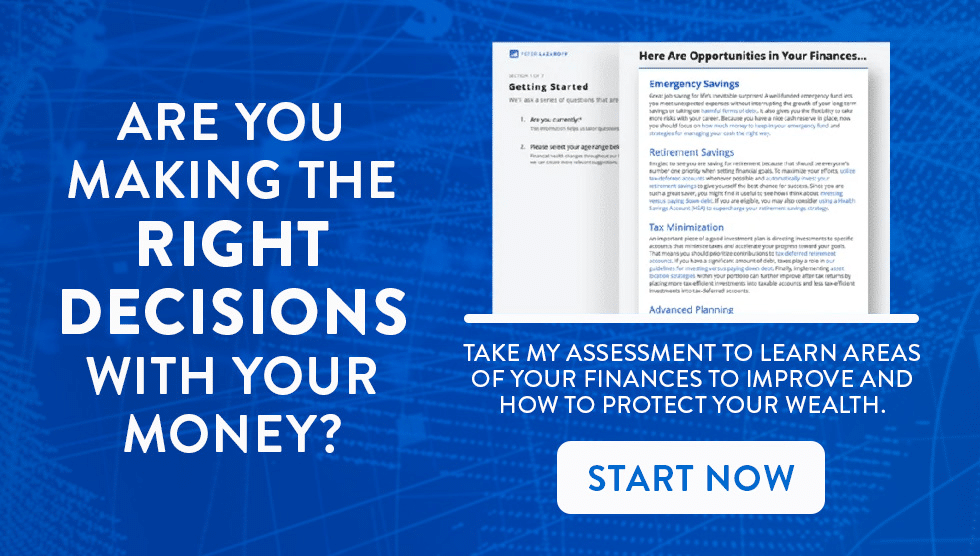
Disclosure: This content, which contains security-related opinions and/or information, is provided for informational purposes only and should not be relied upon in any manner as professional advice, or an endorsement of any practices, products or services. There can be no guarantees or assurances that the views expressed here will be applicable for any particular facts or circumstances, and should not be relied upon in any manner. You should consult your own advisers as to legal, business, tax, and other related matters concerning any investment.
The commentary in this “post” (including any related blog, podcasts, videos, and social media) reflects the personal opinions, viewpoints, and analyses of the Plancorp LLC employees providing such comments, and should not be regarded the views of Plancorp LLC. or its respective affiliates or as a description of advisory services provided by Plancorp LLC or performance returns of any Plancorp LLC client.
References to any securities or digital assets, or performance data, are for illustrative purposes only and do not constitute an investment recommendation or offer to provide investment advisory services. Charts and graphs provided within are for informational purposes solely and should not be relied upon when making any investment decision. Past performance is not indicative of future results. The content speaks only as of the date indicated. Any projections, estimates, forecasts, targets, prospects, and/or opinions expressed in these materials are subject to change without notice and may differ or be contrary to opinions expressed by others.
Please see disclosures here.






